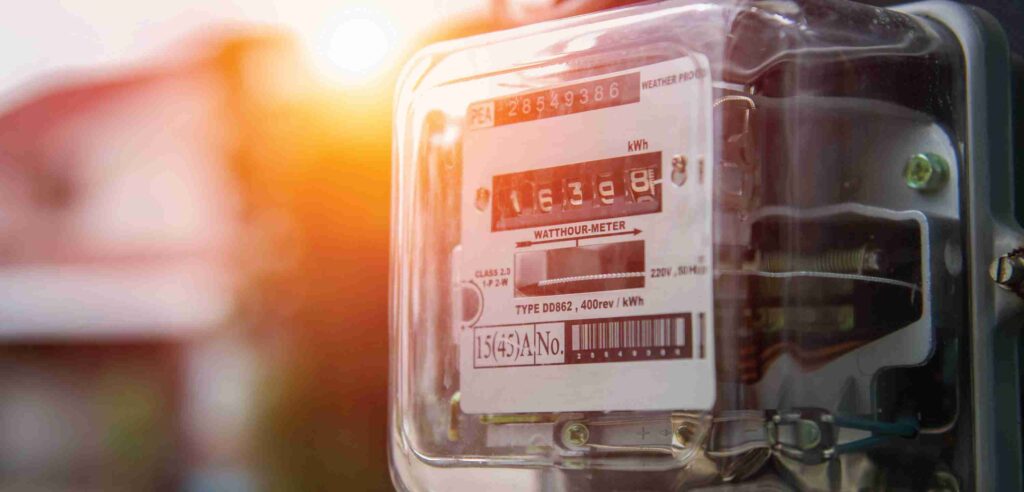Latest Update on Pakistan's Net Metering Policy (March 2025)
Important Update: The Pakistani authorities have these days revised the internet metering policy, considerably lowering the buyback price for solar internet metering to Rs10 consistent with unit—a 63% lower from preceding rates. Additionally, there may be a transition closer to gross metering, that means that sun power manufacturers will now be compensated for all of the energy they generate at a set price, no matter their consumption.
These adjustments will affect residential and business sun users, specially in phrases of the payback duration for sun investments, that is anticipated to increase. The Pakistan Solar Association (PSA) has raised issues that this will discourage new sun installations and have an effect on the renewable power sector`s growth.
Now, let’s dive into the information of internet metering, the way it works, its benefits, and what those adjustments imply for consumers.
What is Net Metering?
Net metering is a billing device that lets in solar power customers to export extra power lower back to the country wide grid in trade for credits. It allows purchasers to offset their power prices via means of producing energy thru solar panels, lowering dependency on traditional power sources.
Under the net metering system, customers who use solar panels to generate electricity can feed excess power into the power grid thus receiving credits that lower their electricity bills. The system provides electricity consumers with credits which they can use to lower their electricity costs. The solar panel energy system functions as a mutual power exchange system by transferring excess generated electricity to the grid while solar users can retrieve power from the grid using their accumulated credits.
This policy enables solar energy consumers to distribute their power usage throughout time which optimizes their cost reduction.

How Does Net Metering Work in Pakistan?
Pakistan introduced net metering in 2015 under NEPRA (National Electric Power Regulatory Authority) regulations. allowing solar system owners with a capacity between 1 kW and 1 MW to connect their systems to the national grid under the net metering policy.
Here’s how it works:
- Solar panel system generates electricity.
- Excess electricity is sent back to the grid.
- The electricity meter information each imported (from the grid) and exported (to the grid) energy.
- Consumers acquire credit for surplus electricity, lowering their standard bill.
Your solar system will help decrease your electricity costs while possible situations may lead to zero billing when the solar power production matches your total electricity usage. This method encourages people and corporations to put money into renewable energy, assisting to fight the country’s electricity shortages
How to Apply for Net Metering in Pakistan?
Step 1: Get a Solar System Installed
Ensure you install a net metering-compliant solar system with an approved bi-directional meter.
Step 2: Apply Through Your Electricity Provider
Submit a net metering application to your electricity provider (e.g., LESCO, KE, MEPCO, FESCO, etc.).
Step 3: Inspection & Approval
The distribution company will inspect your system to ensure it meets the required standards.
Step 4: Net Meter Installation
Once approved, a bi-directional meter is installed to track the energy exchange between your home and the grid.
Step 5: Start Saving!
After installation, you’ll begin earning credits for the extra energy you generate, reducing your electricity bills.
How Does Net Metering Work in Pakistan?
To qualify for net metering in Pakistan, you must meet the following conditions:
- The solar system capacity must be between 3 kW and 1 MW.
- The system must be connected to the national grid.
- Applicants must obtain approval from DISCOs (Distribution Companies) and NEPRA.
Benefits
- Lower Electricity Bills
Consumers can considerably lessen their electricity expenses with the aid of using producing and the usage of their very own energy. - Energy Independence
Reduces reliance on traditional electricity vendors and mitigates electricity shortages. - Environmental Benefits
Solar power reduces carbon footprints and promotes easy electricity adoption. - Return on Investment
A well-deliberate sun setup pays for itself in 1.5 to a few years thru electricity financial savings and authorities incentives. - Grid Stability
Helps distribute electricity manufacturing throughout exclusive sources, lowering strain on countrywide grids.
Challenges & Future of Net Metering in Pakistan
The beneficial opportunity of net metering for solar users comes with several important points to keep in mind:
- Government Policy Uncertainty:
Net metering policies face potential changes from the government through their consideration of gross metering which may impact the financial benefits. Regularly consult NEPRA policies to obtain the information needed for making informed decisions. - Approval Delays:
Registered solar providers help consumers overcome application and approval delays which sometimes occur. - High Initial Costs:
The initial expense for solar panel installation requires an initial financial commitment yet future financial benefits justify this initial investment. - Limited Awareness:
Many people remain unaware of net metering and its benefits. - Technical Barriers:
Not all areas have the infrastructure to support grid-connected solar systems.
The Future of Net Metering
The demand for solar energy continues to rise in Pakistan despite existing obstacles. The adoption of solar energy depends heavily on net metering since electricity prices continue to rise and renewable energy takes center stage. Your solar investment benefits from following policy changes and understanding the system’s operation principles.
Recent Updates to Pakistan’s Net Metering Policy (March 2025)
The Pakistan government has introduced key changes that impact solar consumers:
- Reduction in Buy Back Rates:
- The authorities have slashed the net metering buyback charge to Rs10 in line with the unit, a 63% lower from preceding rates.
- This results in better charges for solar panel owners, making it much less worthwhile to export surplus electricity to the grid.
- Transition to Gross Metering:
- Moving far from conventional net metering, the authorities are enforcing a gross metering system, wherein all generated power is bought at a set charge instead of being credited in opposition to usage.
- This change should expand the payback duration for sun investments and affect the viability of small-scale sun installations.
- Industry Response:
- The Pakistan Solar Association (PSA) has warned that those adjustments should lessen the affordability of sun energy, discouraging new installations.
- Payback durations for solar structures can also additionally now boom from 1.five years to about three years, making it much less appealing for house owners and businesses.
Conclusion: What These Changes Mean for Solar Users
Pakistan`s net metering policy has performed an essential position in promoting solar power adoption. However, the latest modifications—mainly the buyback price discount and shift to gross metering—are anticipated to have an effect on the monetary feasibility of residential and business solar installations.
For purchasers thinking about sun panel installation, it’s now greater essential than ever to cautiously calculate ability costs, payback periods, and financial savings earlier than making an investment. While sun power stays a sustainable and cost-powerful answer in the lengthy run, coverage modifications should have an impact on how fast customers can get better their investment.
